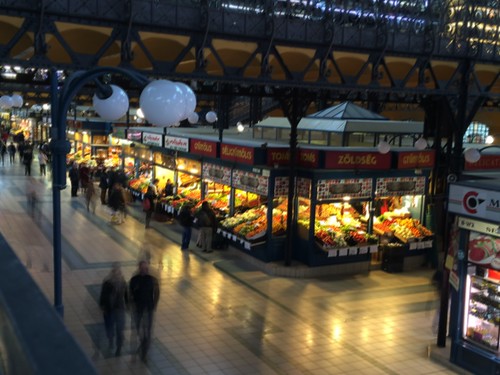Top 10 Public markets in the world according to Tasting Table
Ferry Building in the US makes the cut but not Pike Place Market in Seattle, which arguably is better--but doesn't have outdoor farmers markets, unlike the Ferry Building. See "Super Markets
Excuse us while we get lost in the world's best food markets."
The other day I was watching the episode on Budapest from "Bizarre Foods: Delicious Destinations" and they went to the Budapest Central Market.

Interestingly, they reported that the market is split into two, one for tourists and the other for residents. The side for tourists has souvenir shops and non-local foods, while the market for residents is locally-serving and focused on highlighting local ingredients--like paprika--and unique offerings.
It's an interesting way to deal with the problem of touristification of markets, which ends up crowding out fresh foods to take home to prepare in favor of prepared foods, restaurants, and souvenir stands.
They went down in the basement, to a place that pickles various vegetables, and the basement was still attractive on the verge of beautiful, providing a reason to do down below, when much of the time below ground floor space tends to not be attractive for retail offerings.

Pike Place Market has a basement but it's not beautiful, with low ceilings and it verges on dank.

One of my laments about Eastern Market is that "it is too small" and to be more central to DC's foodways it needs to be bigger/have more vendors.
One major lost opportunity with the renovation of the building post- the 2007 fire was that "we didn't dig out the basement and make it part of the food and retail offer."
The images from the Budapest Central Market's basement drilled that home to me, that if the basement was developed, and developed "to be beautiful" it wouldn't be sub-optimal space, unlike the basement at Pike Place Market.
Labels: cultural planning, food-agriculture-markets, public markets


0 Comments:
Post a Comment
<< Home